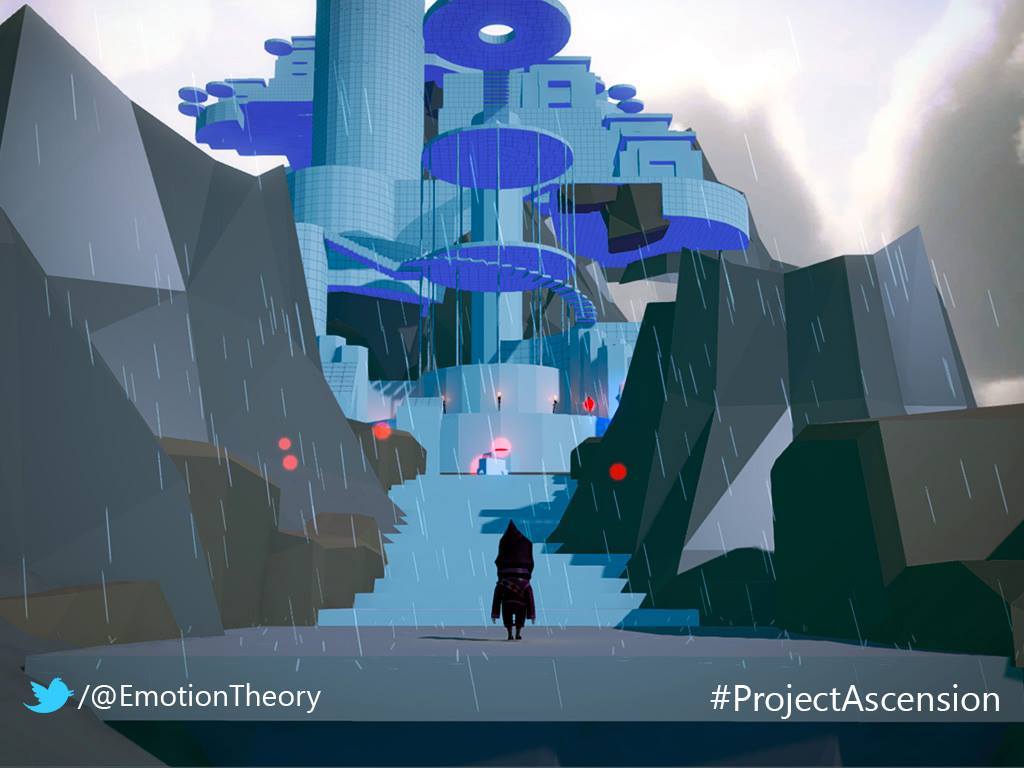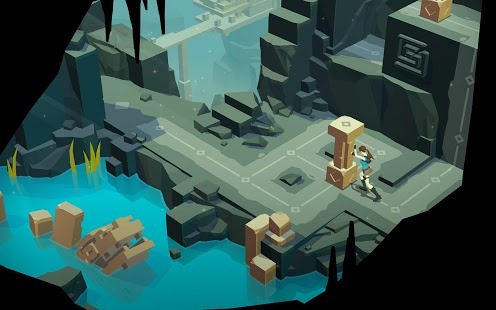
Featured Blog | This community-written post highlights the best of what the game industry has to offer. Read more like it on the Game Developer Blogs.
Streamlining controls in Project Ascension
In this post, I’ll be covering the initial concept along with its successes and failures, the changes made to the control scheme, and the influences behind those changes.

Originally published at emotiontheory.tumblr.com.
My indie game Project Ascension is a puzzle adventure about transcendence, and manipulating architecture by shooting light.
If you want to read more about what it is, you can read this blog post here.
In this post, I’ll be covering the initial concept along with its successes and failures, the changes made to the control scheme, and the influences behind those changes.
The initial concept

Project Ascension initially controlled like a traditional Zelda-like third person adventure game, with WASD / arrow keys / analog stick input for movement. Proudly, I also had a mouse-follow control scheme, where clicking and holding would have the player move in the direction of the mouse. This collective control scheme was inspired by The Legend of Zelda: A Link Between Worlds and The Legend of Zelda: The Phantom Hourglass respectively.
I was really driven on taking a stab at making a Zelda-like adventure that I began by recreating the first dungeon from A Link Between Worlds.
Successes
This was a great experiment as it validated my ability to create something on par with the offerings of a simple Zelda dungeon. It was an amazing accomplishment and a big success in my eyes.
Failures

As I took my main mechanic in its own direction and began to develop my game proper - designing puzzles and levels - some really strange and fundamental control issues came to light.
Some points of note:
Initially you could shoot in 8 directions, which was something I took from A Link Between Worlds. I did this with the intention of maintaining simplified puzzle and level designs.
You couldn’t really aim, or strafe - you would simply shoot in the direction you were facing. I had no strafing animations and hadn’t (nor wanted to) implement some sort of aim mode for arbitrary reasons. This made it a little awkward when trying to line up your shots.
I toyed with different camera angles and choices for them being fixed vs controlled manually - top down, isometric, and a cinematic style ala God of War. I wasn’t sure which to keep or remove, and opted to use them all based on context. The isometric and cinematic style in particular made it very difficult to aim and line up your shots appropriately due to huge amounts of parallax and perception issues.
As an experimental solution, I implemented the means of shooting in the direction of the mouse, which was a step up, but still wasn’t the solution for a few reasons: a) it was exclusive to mouse / touch input, b) based on the camera angle it wasn’t always as intuitive as one might think (a slightly lower angle still made it difficult to shoot where you wanted to), and c) the 8-way direction (45 degree snapping) felt clunky since the mouse’s position is free and doesn’t always align exactly with the direction of the shot.
The name Project Ascension comes from the theme of continually ascending which I decided upon early on. It was something I was adamant on maintaining. As such, most level designs included lots of verticality, with architecture that had lots of levels and stories which wouldobscure the player’s view. I implemented a system that makes obscuring objects transparent, but ended up having to manually place triggers that would hide all others levels you weren’t on. This was a tedious design chore and eliminated some immersion by constantly hiding parts of the level, which removed that sense of awe from seeing the entire level or architecture in its intended form.
Monument Valley’s influence

Initially I thought my game would lend itself well to a Monument Valley-esque control scheme, but I consciously avoided it.
Already my game aesthetically and thematically shared a lot of similarities to that game, and I didn’t want the game to look and feel like a mobile game as my intention was to develop it for desktops. One thing that the Steam community are notoriously vocal about are games that look casual, as well as games ported from mobile.
Yet ultimately, in my quest to streamline the game controls and make them easy, readable, and approachable to everyone, it was inevitable I travel this road…
Lara Croft GO’s influence

The thing that finally convinced me to make the push was Lara Croft GO.
Playing Lara Croft GO was immensely eye opening. The control scheme is so simple, so elegant. It allows for the puzzles to take precedence as opposed to the controls themselves. The controls are merely the means by which the player interfaces with the game, but never is it the focal point; the thing that requires mastery.
This feeling is what I wanted for my game. So I redesigned the control scheme to something similar.
What was gained
Here’s a breakdown of everything new and improved in this control scheme:
Levels are mostly designed using a tile system made of 4x4 blocks. Movement is restricted to these blocks, where players can move one point at a time (or continuously along a single direction). A path finding system is in place that auto detects whether a directional move is legitimate or not. This tile system allows for really fast level design & puzzle iterations.
The default camera follows the player. The player can rotate the camera, which is snapped to 45 degree rotations. This is very similar to the camera implementation in Super Mario 3D World.
I’ve kept fixed camera angles and cinematic shots - such as those seen in Hitman GO or God of War - for very specific cases. It is used very sparingly, with the default snapped player controlled camera taking dominance.
Shots are now only 4-way - snapping to 90 degrees - rather than the previous 45 degree 8-way. This was done for further clarity in control and simplification and clarity in level design. This with the refined camera system work well together, and it's now really easy to line up and aim your shots.
The controls are compatible with keyboard, mouse, gamepads and touch, and are made to be unique and intuitive for each.
With the gamepad, you move and shoot using the analog sticks and rotate the camera using the shoulder buttons.
With the keyboard, WASD will move the player, the arrow keys will shoot, and the Q & E keys will rotate the camera.
With the mouse, you can move and shoot with the left and right mouse buttons, and rotate the camera using the mouse wheel.
With touch, tapping in a direction from the player will move him. Tapping with two fingers will shoot in that direction, and swiping will rotate the camera.
Previously, even experienced players, including myself, found it difficult to maneuver and aim. The target audience for this game is similar to Monument Valley’s - I want the game to be easily accessible and playable by anybody who might be remotely interested in this type of experience. I believe these controls vastly improve the game experience and moves closer to my goal.
What was lost
In doing this, some sacrifices were made (though necessary):
Free form movement is now gone. I have to say, I do miss it. But the clarity in control gained definitely weighs more, making this a necessary sacrifice.
The 4x4 tile blocks can restrict the level’s aesthetics, but this can mostly be alleviated by being creative with what each tile might look like.
The style of game, now feeling closer to Monument Valley and Lara Croft GO, seems more suited to mobile. I’m not sure how the game’s reception will be on Desktops and Consoles.
Again, as above, even in the mobile space there’s the chance players will perceive the game as a knock off of the aforementioned titles.
The game’s initial Nintendo inspirations now seem completely lost. Part of the initial appeal would have been a Zelda-like appearing on other systems, which is not so common. At least Captain Toad’s influence still seems somewhat apparent.
I believe all of these things lost were necessary sacrifices, so I’m not so torn up on them.
Conclusion
I had to make pretty dramatic changes to the fundamental way in which my game would control and play.
Streamlining the controls in this way was necessary to align the game itself with my target audience. It also made the ultimate deliverance of what my game was about - environmental puzzles, aligning yourself with and shooting objects, and verticality and ascension - much clearer and better.
So as to not compromise on these themes and gameplay elements, all of these changes feel appropriate and necessary.
Thanks for reading!
Links
What is Project Ascension (and why am I making it)?
Originally published at emotiontheory.tumblr.com.
Read more about:
Featured BlogsAbout the Author(s)
You May Also Like









